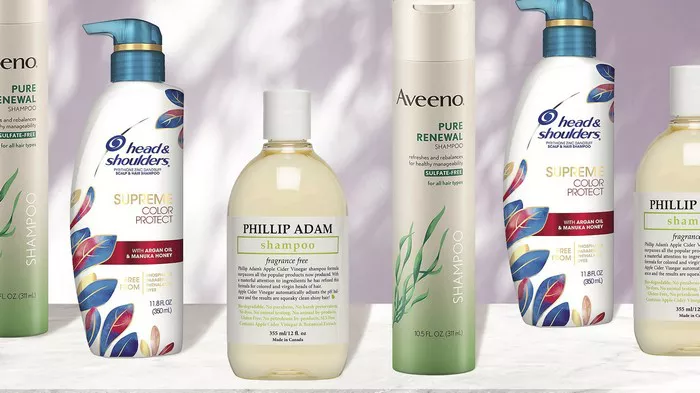If you’ve been wondering why your hair feels more like straw than silk, you’re not alone. While seasonal weather changes are often blamed for parched locks, there may be another culprit lurking behind your dry, brittle strands. The rise of Instagram-worthy hair trends like “pearl balayage” and “butter blonde” has led many to indulge in bleach, a hair treatment known for its stripping effects. But according to the buzzing beauty community on TikTok, there’s another factor contributing to hair woes.
TikTok beauty enthusiasts are educating their followers about the perils of excessive protein on the hair’s surface. Some attribute their limp and frizzy curls to an overload of conditioners, leave-in treatments, and styling products rich in protein. Others point to breakage, a straw-like texture, and a lack of shine and definition in their waves and curls.
Understanding Hair Proteins
Tyler Moore, a stylist at Live True London, explains that proteins come in various forms on ingredient lists, including hydrolyzed collagen, keratin, oat, quinoa, and amino acids. Popular protein-based hair products include the viral K18 Leave-In Molecular Repair Hair Mask ($99.50) and Virtue’s equally renowned Smooth Shampoo ($60). It’s worth noting that while Olaplex contains some protein, it’s not a protein treatment.
The primary protein in hair is keratin, which plays a pivotal role in holding strands together, imparting shine, and reducing frizz. Angela Onuoha, a trichologist and Rhyme & Reason ambassador, emphasizes the conditioning properties of proteins, asserting that they are essential for all hair types to protect and temporarily repair hair.
Can You Have Too Much Protein in Your Hair?
The advice on protein overload is mixed. Onuoha believes that overloading hair with protein from products is nearly impossible because the unique protein structure of hair is difficult to replicate with products. In other words, products with protein tend to form a film on the hair’s surface rather than penetrating it. However, can this affect the hair’s external appearance and texture?
Recognizing Excess Protein’s Effects
Protein buildup doesn’t typically occur on its own, says Moore. Hannah Gaboardi, a trichologist and hair growth specialist, suggests that overusing protein-based hair products can lead to excessively dry, lifeless, and dull hair. Tangles become a common issue, making it challenging to blow-dry, style, or manage the hair.
Moore adds, “Excess protein on the hair’s surface can hinder proper hydration and make the hair dry and brittle. If your hair remains dry and straw-like despite using treatments and moisturizing products, it’s likely due to protein buildup.” Distinguishing between dryness caused by excess protein and damage from heat styling or bleach can be perplexing, says Moore, until you apply a bond-repair or moisturizing treatment.
Addressing Protein Buildup
Moore and Gaboardi concur that if you’ve been using protein treatments and notice your hair becoming drier, it may be wise to take a break from them. Both experts recommend using a gentle clarifying shampoo to eliminate excess protein on the hair’s surface. Options include Ouai Detox Shampoo ($24) or Olaplex No.4C Bond Maintenance Clarifying Shampoo ($54). Gaboardi advises following up with a deep conditioner such as Dizziak Deep Conditioner or Hask Argan Oil Repairing Deep Conditioner Sachet ($4.99) to rejuvenate dry hair.
Should You Abandon Protein Hair Products Altogether?
Not necessarily. If protein-based hair products have been working well for you and your hair is in good condition, there’s no need to ditch them. Onuoha suggests that if you notice your hair feeling dry, brittle, or breaking, it might be time to introduce moisturizing agents. She recommends Rhyme & Reason Nourish & Gloss Shampoo and Conditioner, a range rich in fatty acids and emollients that lock in moisture and keep your hair looking and feeling healthy.


